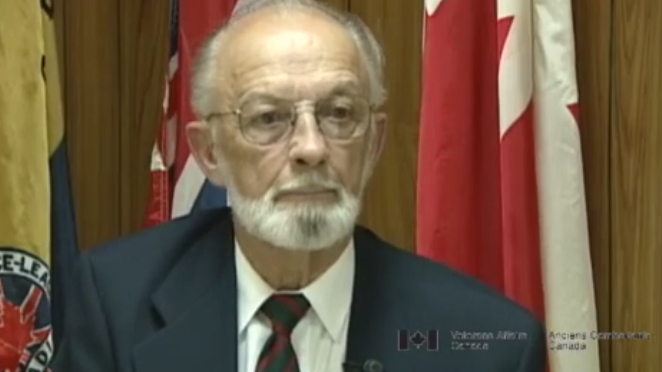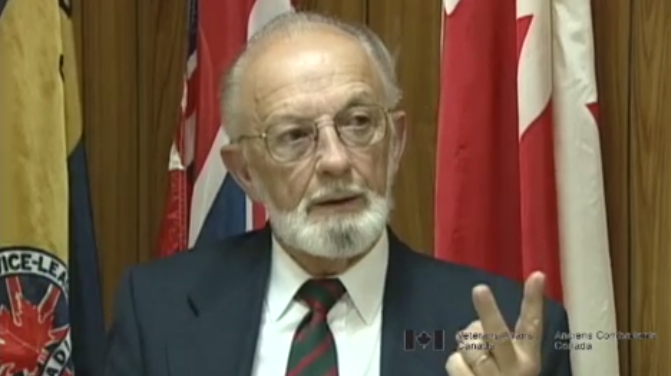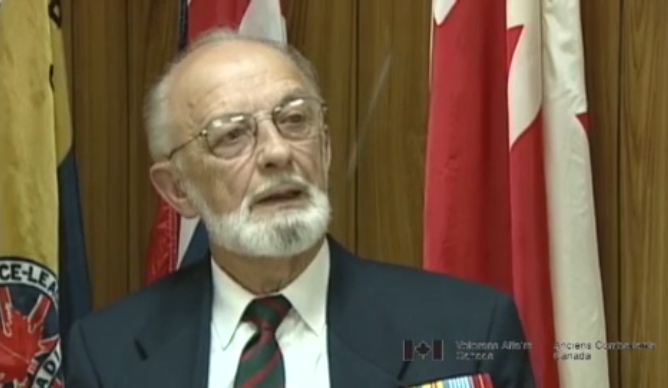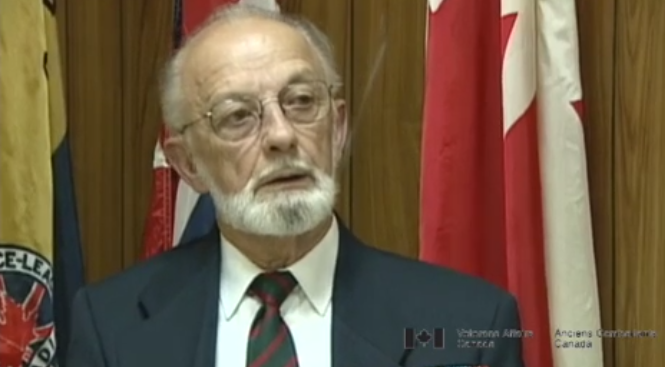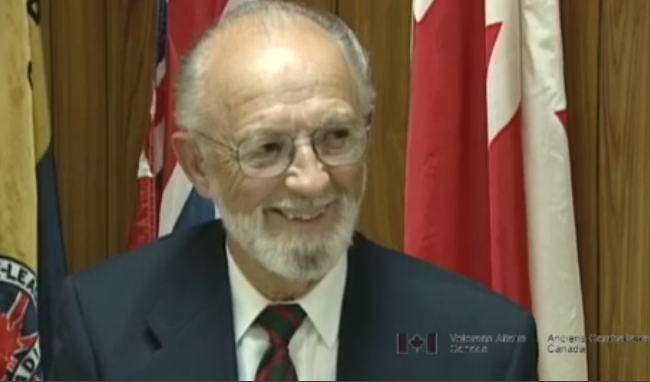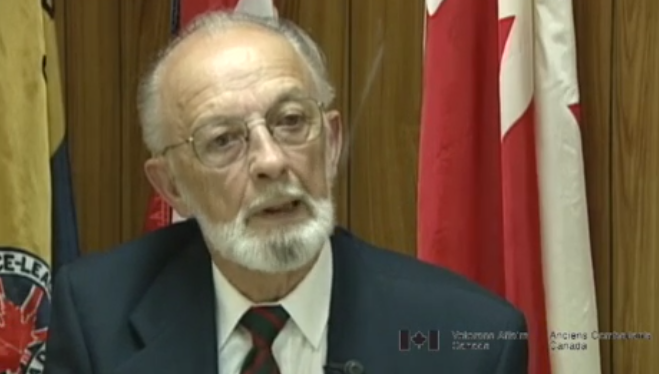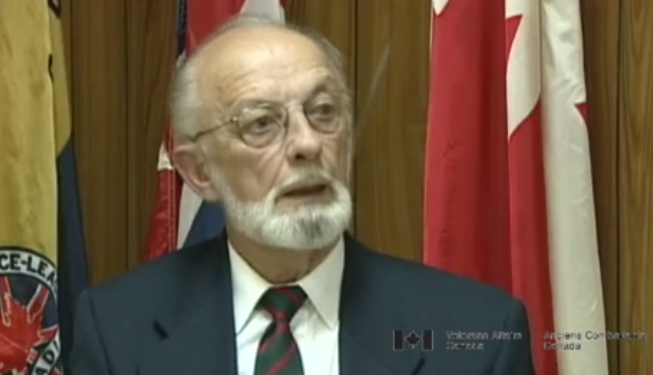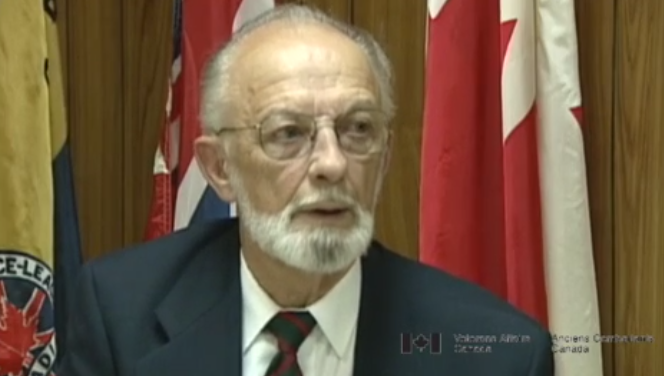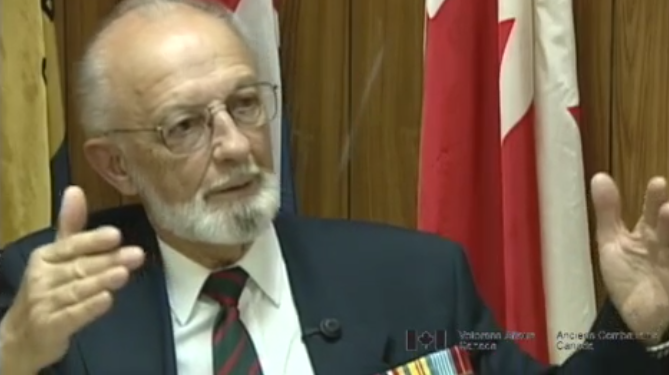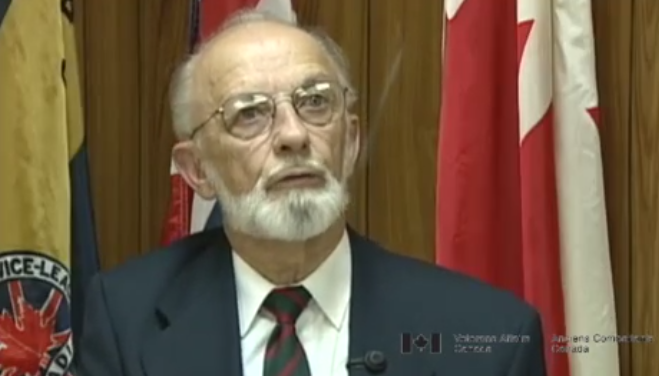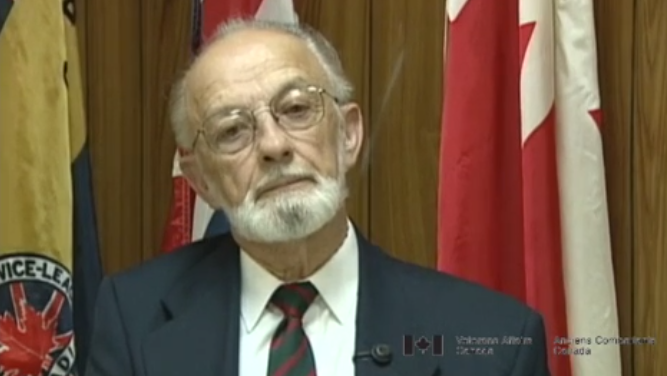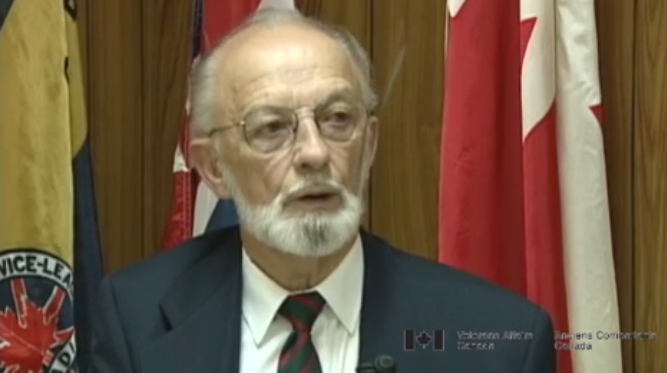They called the Canadians around and they said,
“Who would like to drive this ambulance?”
No one actually wanted to because most of them didn’t
know how to drive, including myself.
However, it came right down to it,
I was elected so I became the driver.
We started out early in the morning and Bickley,
the RAMC (Royal Army Medical Corps) guide, was with me.
We had to go, not the same way that we came in from Victoria,
but I think they would call it, what would they call it?
The east. I guess the east side of the island.
Whereas before we were on the west side of the island.
We started out, got as far as Repulse Bay and we were
going to take that road that goes up to Wong Nai Chong Gap,
and up in through that area,
but the guards told us there it was closed.
So anyway, Bickley said, “Well I know, just keep going
and there is another road that goes around to Aberdeen.”
So we kept going, but the roads were very hilly and there’s a
huge drop, and of course its very curvaceous there, so we
came around a curve and there was a crash on the windshield and
there were, actually I found out later, machine gun bullets
hit the windshield and Bickley, of course, he got the shrapnel
in the eyes, and I kept on going around the curve. There were
vehicles all along the shoulder on one side, because the other
side of course was a big drop, and they were all burnt out,
so there must have been a battle there shortly before that.
Anyway, when I got around to the other side of the hill,
I was sheltered from above, so I just pulled in there,
and I noticed there were two people in a sandbag enclosure right
in the middle of the road. So, I just caught that, you know you
catch things as you go along. I had a shell dressing bag about
that size and there was maybe a dozen shell dressings, and they
were huge things. So, I unravelled one and wrapped it around
Bickley’s eyes, and I pushed him to a corner and told him to stay
there. I was going to go out and see if I could find a way out.
So I got out and I went around the back and I opened the doors,
and this fellow was sitting there. He wanted to get out and figh
the Japs. He had no arms or anything so what happened is the bull
came inside the cabin and they ricocheted around and everyone
in there was wounded, for the second time. Anyway, I pushed
him back in and I said, “You stay in there, I’m in charge of
this ambulance.” I was kind of mad, I suppose, fear and mad
and everything went together. So I said, “Get in there and I’ll
see if I can get us out.” I closed the door and that was it. He
couldn’t open it from the inside so I just went back and I called
out to the two soldiers. One was a Hong Kong volunteer and the
other one was a Winnipeg Grenadier, and I said, “Can I get
through here?” and he said, “No, they’re all the way up, up there
Just then, the Hong Kong volunteer was shot, he just collapsed.
So I thought, well this is it. So I got in the ambulance and I
started to, trying to turn it around, and every minute I expected
the machine guns to open fire. But I was just far enough around
that I was sheltered from the top. I managed to get it around
and of course, I didn’t have that driving experience,
you see, to do all these things, but I did.



